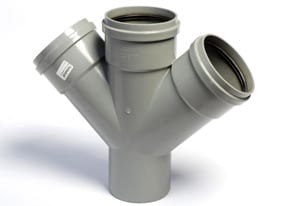
Elastomers vs Polymers
April 5, 2019
What Do Plasticizers Do?
May 17, 2019Weather-resistant plastics have superior durability suited for extensive outdoor applications. These plastics have been widely adopted over the past century. The development of weather-resistant plastics has been one of the major innovations in material science, supplanting traditional materials like metal, glass, wood, and cotton. The appeal of many plastics stems from their better resistance to environmental degradation over time. The wide variety of material properties of plastics make them exceptionally adaptive for many different applications. It’s also safe for humans and is cost-effective.
What Makes Plastic “Weather-Resistant”?
With all weather-resistant plastics, coating technologies are necessary to improve or enhance their performance, such as helping to prevent weathering and oxidation. UV stabilizers such as carbon black pigments and other protective surface coatings like paint or metallization are common additives to enhance the performance capabilities of plastics outdoors. Carbon black pigmentation is cost-effective, and very effective for UV-resistance. Plus, it is eco-friendly, which serves an increasingly growing need for polymeric materials.
Thermoset Plastic Weather Resistance
The two main kinds of plastics are thermoset plastics and thermoplastics. Thermosets are a weather-resistant plastic that have superior durability all-around. They are formed by synthetic polymers and cured through a chemical cross-linking process that undergoes irreversible chemical changes. Once the molecular chains have cross-linked, the plastic object or component formed hardens and cannot be altered or reused. This makes thermosets ideally suited to high temperature and high strength industrial and commercial applications for large-scale components and parts in the construction, transportation and agricultural sectors.
Thermosets have successfully replaced other materials—such as metals—for their improved performance at a lower cost. Structurally, thermosets are lightweight and offer design flexibility. Additionally, they have dimensional stability, are impact and creep resistant, and resist high heat and corrosion. Along with these properties, the weatherability of thermosets makes the plastic an ideal choice for applications where weather-resistance is required.
Three of the Most Weather-Resistant Plastics for Industrial and Commercial Applications:
pDCPD
Structurally, pDCPD is a choice weather-resistant thermoset plastic with excellent material properties. In addition, its heat, corrosion, and impact resistance make it adaptable for a wide selection of applications in most environmental condition. pDCPD can be molded and manufactured easily. Its weather-resistant properties have made it ideal for components and parts in construction and agricultural equipment, buses and trucks, industrial waste containers, and various military equipment. pDCPD, however, is prone to oxidation over time, but it does not affect material performance. Generally, when pDCPD is used for outdoor machinery body parts, panels, or enclosures, OEMs (original equipment manufacturers) rely on weather-resistant paint or special coatings on pDCPD to keep a consistent look with the rest of their equipment.
Phenolic Resins
Another popular weather-resistant thermoset plastic is phenolic resins. Phenolics, or phenolic resins, are one of the more versatile polymers, as well as oldest—first produced in 1907 and originally known by the trade name Bakelite. Phenolics are a low-cost adhesive with excellent high temperature properties. The weather-resistant properties of phenolic resins are also unaffected by bio-deterioration and have superior temperature stability. Adhesives made of phenolic resins are burn and water resistant, and adhere to many different substrates. It is used as an adhesive in marine applications, automotive laminates, and in the production of exterior-grade weatherproof plywood.
Polycarbonate
Polycarbonate is another high performance, optimal weather-resistant plastic. It is made from thermoplastic polymers. As a material, polycarbonate is durable and malleable, has exceptional strength, and its properties allow it to withstand considerably high pressure and impact resistance. It has highly transparent properties that filter out ultraviolet rays, which make it ideal for greenhouses, nurseries, skylights, and optics. Transparency is also good for security applications such as glazing municipal buildings, detention centers, and embassy entries and windows. Polycarbonate is used in bus shelter glazing, barrel vaulted canopies, windshields and windows for military vehicles, and a variety of construction, agricultural, and mining equipment.




